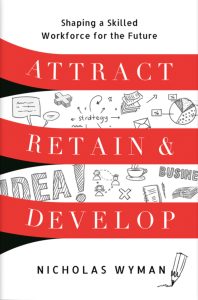 Across industries, employers are facing a frustrating paradox: There are open jobs, yet too few candidates with the right skills to fill them. As companies adapt to rapidly changing technologies, demographics and workplace expectations, it’s clear that traditional hiring methods are no longer enough.
Across industries, employers are facing a frustrating paradox: There are open jobs, yet too few candidates with the right skills to fill them. As companies adapt to rapidly changing technologies, demographics and workplace expectations, it’s clear that traditional hiring methods are no longer enough.
One proven, but often overlooked, solution is apprenticeship. Long associated with the trades, modern apprenticeships have evolved into a versatile workforce strategy used in fields ranging from healthcare and IT to finance and advanced manufacturing. More than just job training, apprenticeship is a talent development pipeline — one that helps companies grow the skilled workforce they need.
At its core, apprenticeships combine structured, paid on-the-job training with formal education. Apprentices work under the guidance of experienced mentors while completing coursework that leads to an industry-recognized credential. Graduates emerge ready to contribute, having mastered the technical and soft skills their employer requires.
The apprenticeship model has existed for centuries, but it has never been more relevant than it is today. With traditional education pathways often out of sync with workforce needs, and many job seekers lacking practical experience, apprenticeship provides a direct path to job readiness. It also benefits employers by reducing recruitment risk, increasing retention and ensuring cultural alignment.
I’ve worked with organizations around the world to implement apprenticeship programs, and the impact is consistently powerful. One example is ExxonMobil’s Esso Australia, which introduced a tailored apprenticeship strategy to meet future workforce needs. The company saw a 95% retention rate among graduates and dramatically lowered recruitment costs. Just as importantly, it built a workforce fluent in its systems, values and safety standards — outcomes that are difficult to achieve through traditional hiring alone.
Building an apprenticeship program does require upfront investment. Employers must identify their skills gaps, design or adopt relevant curriculum, and train mentors. But they don’t need to do it alone. Workforce intermediaries, community colleges and industry groups are increasingly stepping in to provide guidance, partnerships and resources to support employers throughout the process.
The return on investment often comes quickly. Apprentice-trained employees tend to be more productive from day one, having already worked with the tools and systems they’ll use on the job. They are also more likely to remain with their employer, thanks to the mentorship, support and growth opportunities they received during the program.
Beyond the numbers, apprenticeship contributes to a stronger workplace culture. It signals a commitment to continuous learning and internal mobility. It also offers experienced employees new roles as mentors, giving them a way to pass on their knowledge and stay engaged. These internal career development opportunities often lead to higher job satisfaction and lower turnover across the board.
Apprenticeships also support broader diversity and inclusion goals. Because programs focus on skills development rather than degrees alone, they can open doors to talent from a wider range of backgrounds — including those historically underrepresented in certain industries.
Looking ahead, the companies that thrive will be those that invest in building their workforce, not just hiring for it. Apprenticeships offer a clear, practical path to doing so. It’s a strategy rooted in tradition but fully aligned with the future of work.
 Nicholas Wyman is a workforce development expert and author of the Amazon best seller Attract, Retain & Develop. As CEO of the Institute for Workplace Skills and Innovation America, he has helped launch more than 20,000 skills-based careers and advises companies on building future-ready talent strategies.
Nicholas Wyman is a workforce development expert and author of the Amazon best seller Attract, Retain & Develop. As CEO of the Institute for Workplace Skills and Innovation America, he has helped launch more than 20,000 skills-based careers and advises companies on building future-ready talent strategies.
Did You Know: Companies that use apprenticeship programs see a 92% employee retention rate one year after completion — compared to just 50–60% for traditional hires.
Photo courtesy of IWSI America













